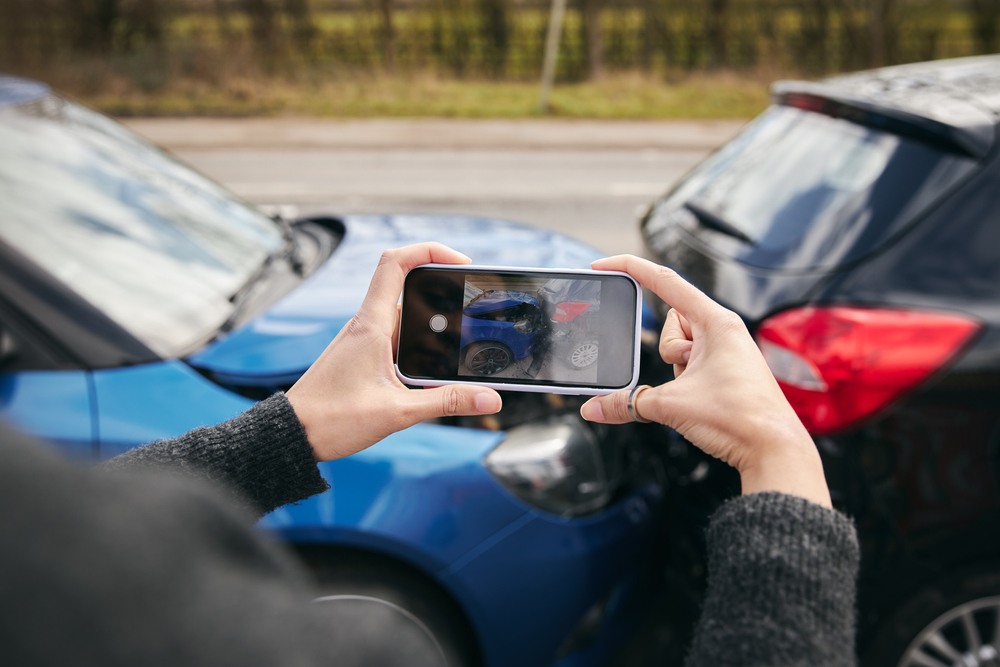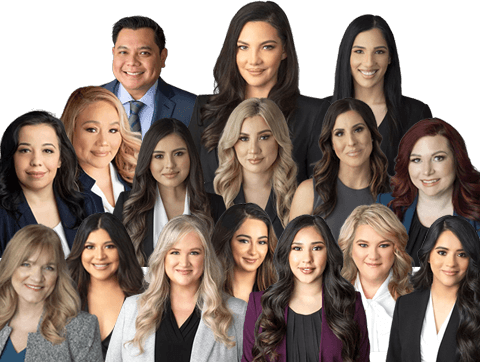
Founding Member & Managing Partner at Gina Corena & Associates
Practice Areas: Personal Injury

A car accident can turn your life upside down in an instant. Between medical bills, vehicle repairs, and dealing with insurance companies, the aftermath can feel overwhelming.
Gathering strong evidence is one of the most important steps you can take after a crash. The success of your claim—and the amount of compensation you receive—depends on the proof you provide to establish fault, document damages, and justify your losses.
Nevada’s comparative negligence law makes building a strong case even more critical. Under this law, your compensation can be reduced if you’re found partially at fault. Whether you’re facing a straightforward insurance claim or a complex legal battle, having clear and compelling evidence can mean the difference between a fair settlement and an unjust denial.
In this guide, we’ll break down the key types of evidence you need to strengthen your case, protect your rights, and ensure you get the compensation you deserve.
Evidence serves as the foundation of any car accident claim or lawsuit. It provides factual proof to support your side of the story. Without it, insurance companies may question your claim, minimize your injuries, or even blame you for the accident.
Strong evidence:
Nevada follows a comparative negligence system. This means if you’re found partially at fault for your accident or injuries, your percentage of fault reduces your compensation. This makes gathering strong, clear evidence even more important.
“Under Nevada’s comparative negligence law (NRS 41.141), a claimant can recover damages if they are less than 50% at fault. However, their compensation is reduced by their percentage of fault.”
A successful accident claim relies on different forms of evidence—the more detailed and comprehensive your documentation, the stronger your case.

Physical evidence from the crash site is one of the most compelling pieces of proof. It provides a direct representation of how the accident occurred and can be used in accident reconstruction reports.
Key forms of physical evidence include:
Try to preserve damaged vehicle parts or other objects involved in the crash. These can serve as key pieces of forensic evidence.
Visual evidence is one of the most potent tools in proving fault. Insurance companies and courts rely heavily on photos and videos to assess accident details.
When documenting an accident scene, capture:
Dashcam footage and surveillance videos from traffic cameras or nearby businesses can also provide crucial evidence.
“According to the National Safety Council, using video evidence in accident claims can increase the likelihood of a favorable settlement by 60%.”
A police report is often the most critical piece of evidence in a car accident case. Officers document their findings at the scene. These findings can influence insurance decisions and legal claims.
A police report typically includes the following:
“A police report provides an unbiased, official account of the accident. It’s one of the first documents insurance adjusters and attorneys review in a case.”
Always request a copy of your police report as soon as it becomes available.
Eyewitnesses provide third-party accounts of the accident. Their testimony or statements can strengthen your case if the other driver disputes fault.
Witness statements should include:
Expert testimony can also be valuable. Accident reconstruction specialists analyze skid marks, vehicle damage, and impact angles to provide scientific explanations of how the accident occurred.
Medical records are vital evidence in proving the extent of your injuries. Insurance companies may argue that your injuries aren’t serious if you delay treatment.
Key medical records include:
“Medical records provide crucial evidence of injuries sustained in an accident. Failing to seek medical treatment immediately can weaken a claim significantly.”
A car accident often results in lost wages and financial hardship. Keeping detailed records of economic losses is essential for claiming compensation.
These documents may include:

| Type of Evidence | Why It’s Important | Best Practices |
| Photographs & Videos | Provides visual proof of damages and accident scene. | Take pictures from multiple angles. |
| Police Reports | Official record of accident details and fault analysis. | Request a copy from the local police department. |
| Eyewitness Testimonies | Neutral third-party accounts strengthen the case. | Collect contact details of witnesses. |
| Medical Records | Proves injury severity and required treatment. | Seek immediate medical attention. |
| Dashcam/Surveillance Footage | Can provide clear evidence of what happened. | Secure copies from businesses or traffic cams. |
| Financial & Employment Docs | Supports claims for lost wages and damages. | Keep a record of all accident-related expenses. |
Take photos, record videos, get witness contact details, request a police report, and seek medical attention. Collect all receipts and documentation related to vehicle repairs and medical treatment.
Although it’s not required, a police report enormously strengthens your case by providing an official, unbiased record of the accident.
Yes, dashcam footage is highly reliable evidence that can show who was at fault in the accident.
Gather witness statements, video footage, and police reports to support your claim.
Keep all accident-related records for at least a few years, especially if legal action is possible.
Building a strong car accident case hinges on the quality of the evidence you collect. From photographic proof and police reports to medical records and eyewitness testimonies, every piece of documentation plays a critical role in determining fault, proving damages, and securing the compensation you deserve.
Nevada’s comparative negligence law makes it even more essential to present clear, irrefutable evidence that supports your claim and protects you from unfair blame. Without the proper proof, insurance companies may attempt to minimize your settlement or deny your claim altogether. Having a skilled legal team by your side can make all the difference.
At Gina Corena & Associates, our experienced Las Vegas car accident lawyers understand the complexities of Nevada car accident laws and know how to build a compelling case backed by substantial evidence.
Whether you need help gathering crucial documentation, negotiating with insurance adjusters, or preparing for trial, we are here to fight for your rights. Don’t let a lack of evidence jeopardize your case—reach out to us today for a consultation, and let us help you secure the compensation you rightfully deserve.

As founder of Gina Corena & Associates, she is dedicated to fighting for the rights of the people who suffer life-changing personal injuries in car, truck and motorcycle accidents as well as other types of personal injury. Gina feels fortunate to serve the Nevada community and hold wrongdoers accountable for their harm to her clients.